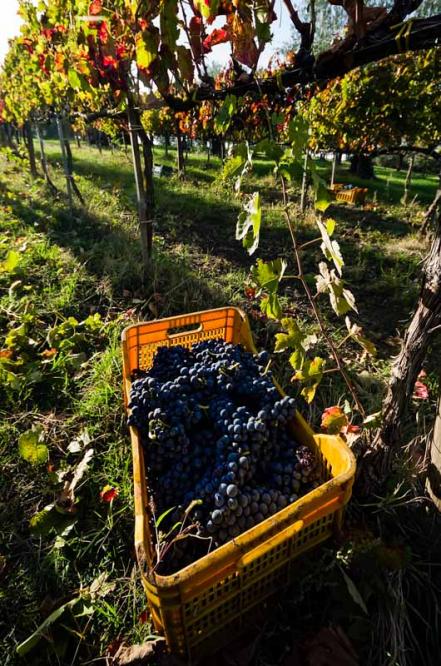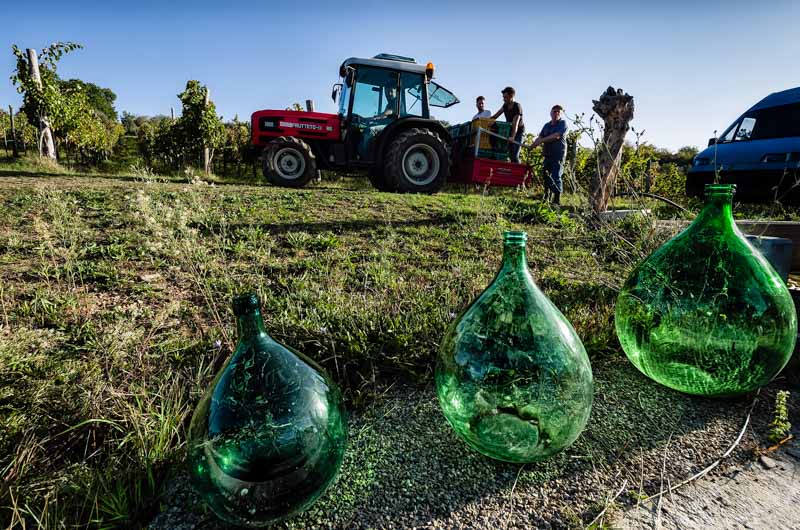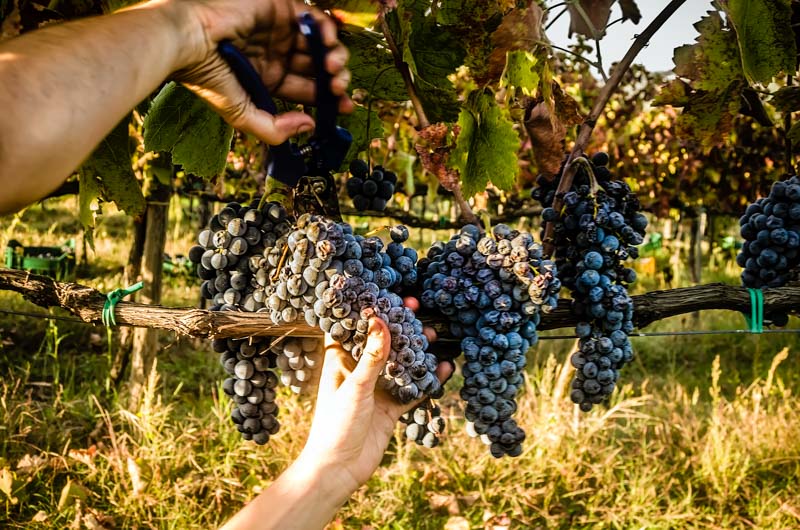
Let’s journey to the heart of Italian winemaking and discover the magic of Aglianico, a juicy and flavorful black grape with roots dating back to ancient Greece.
Its name is pronounced “ahl-YAH-nee-koe,” and after a long journey, it has found a new home in the sunny vineyards of Irpinia, located in Southern Italy.
Let’s explore the story of this grape together!
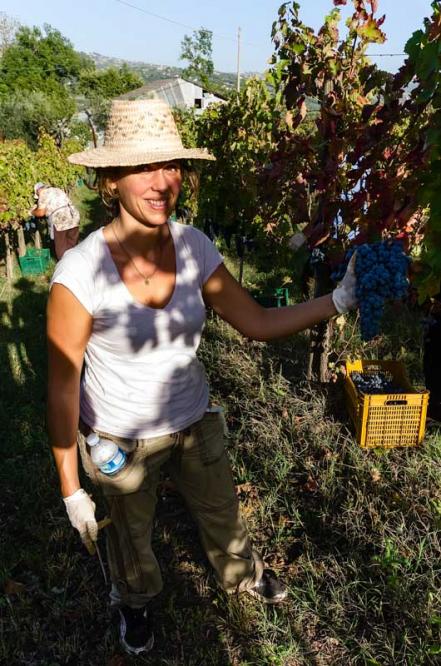
Unravelling the Origins of Aglianico: From Greece to Southern Italy
Legend has it that Aglianico’s name may stem from its Greek roots, with some suggesting it as a corruption of “vitis hellenica,” Latin for “Greek vine.”
Alternatively, it may trace its lineage to “Apulianicum,” the Latin moniker for Southern Italy during the Roman Empire.
Whatever its etymology, Aglianico has cemented its status as a premier grape, once reigning as the cornerstone of the illustrious Falernian wine, coveted in ancient Rome.
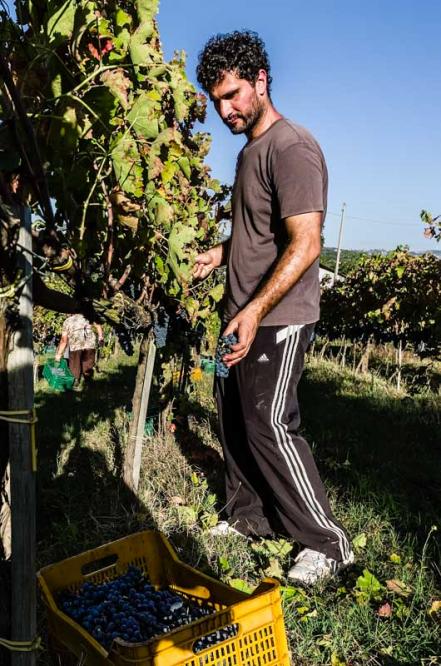
Aglianico vine
The Aglianico grapevine is a fascinating plant that requires specific conditions to flourish.
This grapevine is known for its early blooming, which makes it highly sensitive to frost.
It is best grown in dry climates with ample sunshine, which helps it develop its unique flavours and aromas.
While this grapevine is relatively resistant to oidium, a fungal disease that can cause powdery mildew, it is highly susceptible to Peronospera, a downy mildew that can be quite damaging to the plant.
The Aglianico grapevine also has low resistance to botrytis, a noble rot that can enhance the flavours of some wines. However, this grapevine is too tannic to make a worthwhile dessert wine, so the presence of botrytis in the vineyard is more of a viticultural threat than an advantage.
Despite its vulnerabilities, the Aglianico grapevine is highly valued for its unique taste and is widely cultivated in Italy and other countries with suitable climates.
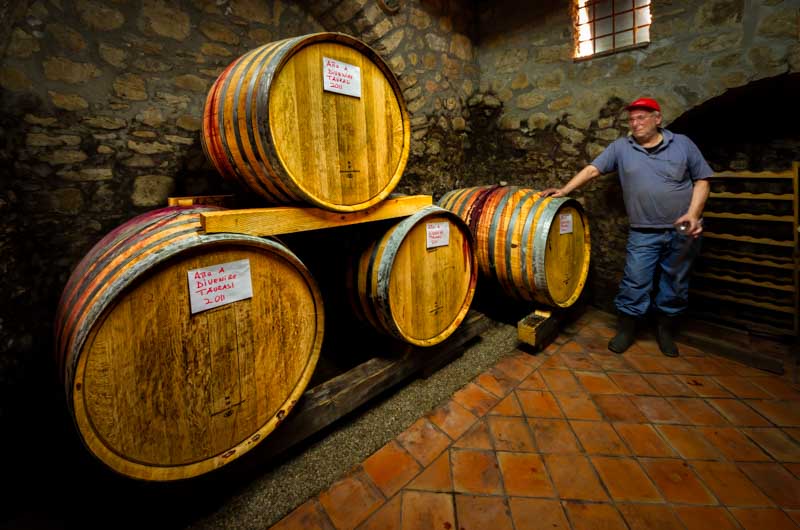
The Wine: A Symphony of Flavors and Ageing Potential
Wines made from Aglianico grapes are typically full-bodied with firm tannins and high acidity, which gives them excellent ageing potential.
The wine’s rich flavours make it a perfect complement to rich meats such as lamb.
In Campania, the grape has been blended with Cabernet Sauvignon and Merlot to produce some Indicazione Geografica Tipica (IGT) wines.
When young, Aglianico wine is very tannic and concentrated, requiring a few years of ageing before it can be enjoyed.
As it ages, the fruit flavours become more pronounced, and the tannins become more balanced with the wine’s other components. The wine’s signature colour is a deep garnet, and in well-crafted examples, it can have aromas of chocolate and plum.
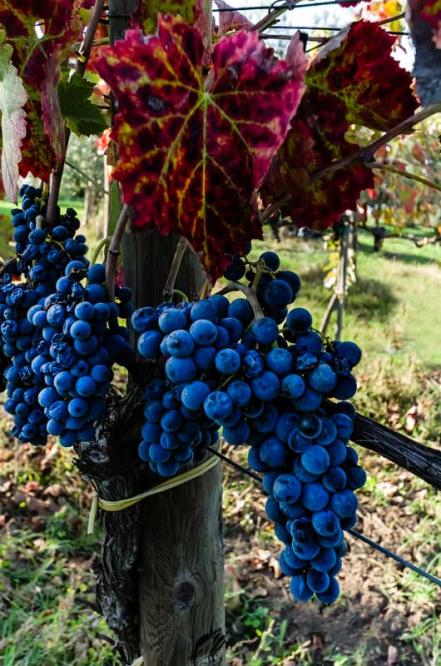
A Day in the Vineyard: Capturing the Essence of Harvest
Embark on a mesmerizing journey that takes you through the sprawling vineyards of Southern Italy, where the Aglianico grape is harvested with utmost care and devotion.
Every vine in this picturesque landscape holds a unique story of dedication and passion, as the skilled pruners toil tirelessly under the scorching Mediterranean sun.
Their hard work and perseverance culminate in a symphony of flavours that are carefully captured in every plump grape.
Through a series of captivating photos and a glimpse into their world, get ready to experience the artistry and tradition that are meticulously woven into every bottle of Aglianico wine, a grape that is steeped in history and yet holds a world of possibilities for the future.
Did you like it? For more beautiful photos and travel stories, just use the menu above and browse the site. Do you know that you can send any of my images as an e-card?
Just choose your favourite image, press the e-card- button down on the right and that’s it, the pic is ready to be sent to your loved ones! Just give it a try, it’s fun and it’s free!
Would you also like to read all my upcoming travel stories? Just click here and subscribe to my newsletter.
I will mail you only when I release a new article. Your information is 100% safe and never shared with anyone



